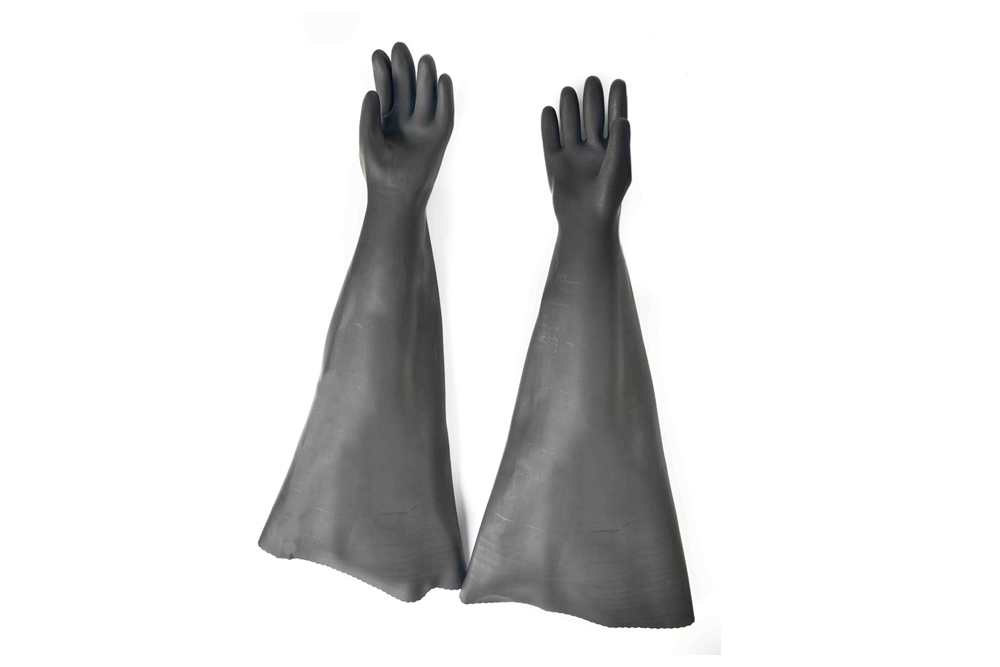Factory wholesale price for 32″ rubber glove with cotton linning-rough finish in Namibia
Short Description:
Heavy duty rubber glove, made of 100% natural latex. 32″ length(82cm), rough finish, seamless, cotton lining, ambidextrous style (fits either hand), 800g/pair, 50pairs/case. Using for Isolater, dry box, blast cabinet, etc.
Product Detail
FAQ
Product Tags
We depend on sturdy technical force and continually create sophisticated technologies to meet the demand of Factory wholesale price for 32″ rubber glove with cotton linning-rough finish in Namibia, Welcome to build the well and long standing business relationships with our company to create a glorious future together .customers' satisfaction is our eternal pursuit
Heavy duty rubber glove, made of 100% natural latex.
32″ length(82cm), rough finish, seamless, cotton lining, ambidextrous style (fits either hand), 800g/pair, 50pairs/case. Using for Isolater, dry box, blast cabinet, etc.
FAQ Content
Europe Cleanroom Disposable Gloves Market to Reach $318 Million, by 2022
Read more at: https://www.alliedmarketresearch.com/press-release/europe-cleanroom-disposable-gloves-market.html
Europe Cleanroom Disposable Gloves Market Report, published by Allied Market Research, forecasts that the market was $180 million in 2015 and is expected to reach $318 million by 2022, registering a CAGR of 8.6% during the period 2016 – 2022. Semiconductors industry is expected to remain the dominating segment throughout the forecast period.
A gradual rise in stringent regulations across various industries such as pharmaceuticals and semiconductors boosts the adoption of cleanroom disposable gloves, thereby driving the market. Europe is considered as one of the leading economies for technological development in all the fields, such aspharmaceuticals,semiconductors and electronics. Thus, the increase in cleanroom spaces across industries has resulted in the need for extensive technological advancements in cleanrooms consumables; such as, advancements in wide range of gloves with improved qualities as per the area of usage. In addition, numerous applications across the pharmaceutical industry include enzyme, vaccine production, large and small parenteral volumes. Adoption of industrial robots and volatility of raw material prices would moderately restrain the growth of cleanroom disposable gloves market in the coming years.
Request for free sample of report at: https://www.alliedmarketresearch.com/request-free-sample/635
Very best Silicone BBQ and Oven Gloves you’ll ever possess. http://www.amazon.com/Silicone-Resistant-Cooking-Water resistant-Dishwasher/dp/B00Q6ESW7C/ie=UTF8?m=A3I7O4VVW1NXOC&key terms=bbq+gloves
The Very best Silicone BBQ Gloves, Warmth Resistant up to 425 Degree’s Fahrenheit. Excellent for grilling on the barbecue. Multipurpose silicone kitchen oven cooking gloves, dishwasher safe and water-resistant, non slip five finger grips. We thank you for taking the time to look at our YouTube video clip and take pleasure in your opinions, likes and feedback.
• HE Very best Warmth Resistant Silicone Barbecue Gloves and Cooking Gloves to Secure Your Palms to a Whopping Temperature of 425 Levels Fahrenheit.
• SILICONE Risk-free- Five Finger structure Has Larger Versatility than the Oven Mitt. Gloves Let Risk-free Transfer of Warm Objects with a Powerful Grip.
• Amazing for Cooking in the Kitchen area and Outdoor Grill. Excellent for potholders and brilliant for the outside on the barbecue grill.
• MULTI Goal- From washing the vehicle, household cleaning, performing the dishes, gardening and so on. Food and drug administration Authorised, BPA Totally free, Non-Slip, Water resistant, Dishwasher Risk-free – All the things just washes off!
• THE SILISAFE GUARENTEE – a hundred% Shopper Gratification.
The Magic formula to Shopping for THE Very best Household Silicone BBQ Gloves is to Purchase a Pair that has the Versatility to Perform a Multitude of Tasks All over the House!
Here is an incredible substitute and a superb answer to a domestic glove that has lots of positive aspects.
These magnificent Multipurpose Silicone BBQ Gloves are much much easier to maintain, easy cleanse and no much more fuss like the aged out dated oven mitts. No much more dirty, absorbent smelly odors lingering on your palms. Your aged out-of-date mitt can spend much more time in the laundry than on your palms. Here is a marvellous answer- Silicone SiliSafe BBQ Gloves are the sensible versatile choice to a no fuss, multipurpose instrument for any activity. Fantastic for dealing with those people sizzling dishes or pans, superb for the outside and the house and a existence saver when grilling on the barbeque. The final answer is SiliSafe Warmth Resistant Silicone BBQ Gloves that can stand up to 425 Levels (F).
How lots of gloves have a multipurpose use? A person answer for the Kitchen area, House and Garden. With these gloves it really is a one prevent enjoy affair. Brilliant on the barbeque grill and cooking outside. Can make cleaning the grill a breeze and washing those people substantial potholders pain-free. So easy to maintain, these Silicone bbq gloves are dishwasher proof! Change a sizzling light-weight bulb, open rough jars or defrost the freezer.
Risk-free with a Solid Iron Grip! These Silicone BBQ Gloves are produced from a hundred% Pure Silicone, BPA absolutely free, Food and drug administration Authorised, No-Slip and a Life span Assurance. A person sizing suits most from Compact to XL- so very simple.
Make Daily life A Complete Lot Easier with SiliSafe Silicone Gloves for..
• Grilling
• Barbecuing
• Baking
• Cleaning
• Opening rough jars
• Altering Light-weight Bulbs
• Defrosting the freezer
Backed by Silisafe’s Life span Assurance
http://www.amazon.com/Silicone-Resistant-Cooking-Water resistant-Dishwasher/dp/B00Q6ESW7C/ie=UTF8?m=A3I7O4VVW1NXOC&key terms=bbq+gloves






